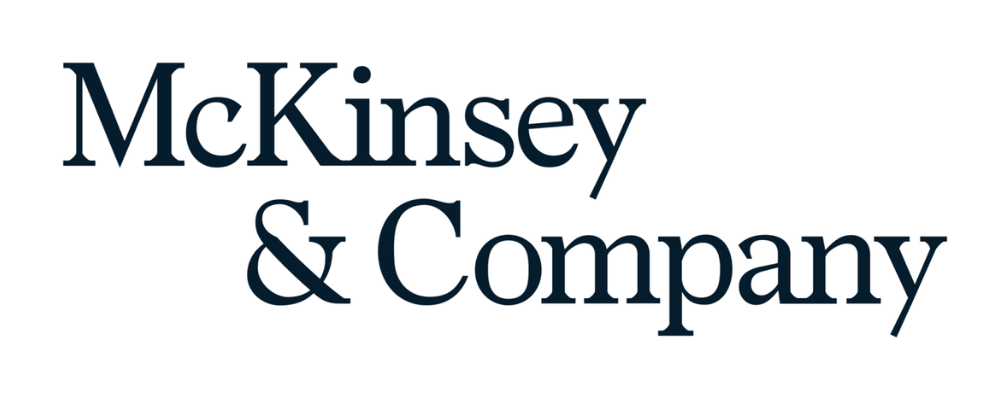In this edition of Author Talks, McKinsey Global Publishing’s Rochelle Toplensky chats with Karthik Ramanna, professor of business and public policy at the University of Oxford’s Blavatnik School of Government, about his new book, The Age of Outrage: How to Lead in a Polarized World (Harvard Business Review Press, Fall 2024). Ramanna provides a new framework for how to sustainably manage during the “era of outrage” built on fear, lack of trust, and an us-versus-them outlook. He cautions leaders to start by setting realistic expectations of what can be achieved and assessing the challenges inherent in leading in a polarized world. An edited version of the conversation follows. You can also watch the full video at the end of this page.
What do you mean by the age of outrage?
Managing outrage is crisis management, and in some sense, we’re quite good at it. It’s not easy, but we know how to bring in a public relations team, bring in a communications team, and put out fires. The age of outrage indicates that there’s a systemic nature to this problem, and the list of problems that you have to solve keeps increasing. So, you’ve got to find a way to sustainably handle this problem-solving while doing all the other things that you must do in an organization.
The age of outrage indicates that there’s a systemic nature to this problem, and the list of problems that you have to solve keeps increasing.
What is causing the age of outrage?
There are three core structural causes.
- Fear of the future. I’m referring to the idea that in the context of developments—such as advances in AI and quantum computing—we’re on the cusp of a transformation that is perhaps even greater than the world changes that the Industrial Revolution brought. Given additional concerns, such as climate change and demographic shifts resulting from aging societies, people are very worried about the future.
- Perception of a raw deal. We’re also living in an age where many people feel that the rules of the game are rigged and not working for them.
- Ideologies of othering. The third factor refers to the abandonment of enlightenment values, which are that somehow we’re all in this together. Instead, there is a return, perhaps, to our tribal instincts, which are “us versus them,” and to seeing the world through that kind of lens. Put these three things together, and this is the age of outrage.
You write that it’s important to set realistic expectations. What should a leader expect to achieve?
There’s a sense of perspective that leaders need to have in this moment. While everybody needs to do their part, no individual is going to be the white knight in shining armor who will somehow make all these problems go away. What’s important in this context is to say, “OK, what are the steps that my organization can meaningfully take in this process that will then deliver success in a limited way?”
There is a tendency for executives, particularly among the higher ranks of organizational management, to see themselves as the saviors of this moment. But this problem is bigger than any one person. By trying to see yourself as a savior, you will make yourself more of the problem because many people will legitimately experience you as part of the problem.
What’s your framework for leading in the age of outrage?
The framework has five elements.
- Turning down the temperature. This is the first and most important element. There’s a tendency among managers to think that they are somehow above the fray and everybody else is outraged. But you’re just as likely to be a victim of the age of outrage as everybody else. Therefore, turning down your own temperature—putting yourself in the emotional head space where you can do more good than harm—is the first and most important step.
- Making sense of the moment. This is an analytical phase, but it’s not something you do alone. You need a trusted community of people who have diverse perspectives. They trust you enough to be able to speak truth to power, and they’re diverse in the sense that they have different lived experiences from your own.
- Bounding the response. What are the situations in which I will lean in as an organization, and what are the situations in which I will lean out? Organizationally, some of these decisions would have already been made for you as a result of your past commitments. However, you should be able to conduct an audit of your past commitments and ask, “OK, what are people expecting of me? What are some implicit promises I’ve already made?” and based on that, determine whether you should lean in or lean out on this issue.
- Implementing your plan. Implementation requires a careful analysis of power. There are prosocial ways in which to deploy power, and then there are antisocial ways. In an age of outrage, you can’t just order people to do what you want them to do. It requires thinking about your power deliberately.
- Rebuilding resilience. This step is the final part of the framework. All of these other steps—turning down the temperature, making sense of the moment, scoping and bounding responses, and mapping your power so you can implement your plan—are really hard to do. So, you need to take the time for yourself personally, and for your organization as a whole, to rebuild your resilience. That’s critical. If you as a leader expect to be making all the decisions because you don’t want to take the time to build resilience within the organization, then you will quickly burn yourself out and you will make a lot of mistakes.
There’s a tendency among managers to think that they are somehow above the fray and everybody else is outraged. But you’re just as likely to be a victim of the age of outrage as everybody else.
In the age of outrage, can companies take ethical positions?
Many companies have already made these decisions by virtue of their strategies. For example, as part of its strategy, IKEA has already sold itself to its customers as an embodiment of Scandinavian values. If they then say, “When it comes to certain issues, we don’t want to reflect Swedish values, we want to be more opportunistic,” that will come back to bite them. They’ve already made an implicit decision, and it’s connected to their strategy.
The position depends on the company and on the strategy. Companies have fewer degrees of freedom on this issue than they might first imagine that they do. Your stakeholders will have a heightened vigilance if they perceive you to be hypocritical or misaligned with your commitments. In addition, people have much shorter fuses now than they did previously, and that will come back to bite companies as well. People may have been more forgiving 30 years ago, but not today.
What type of leader is required in the age of outrage?
The classical Greeks said, “These are the four virtuous qualities that we want people, citizens, or leaders of all types to develop in themselves: courage, justice, wisdom, and temperance.” Courage gets a lot of play in leadership development manuals and in business school classes on leadership. Justice does as well, as does wisdom, to an extent. The virtue that gets underplayed is temperance.
Temperance is almost a bad word when it comes to leadership. It’s seen as perhaps not standing for anything, but that’s not what it is at all. If you think of some of the most temperate leaders of the last few decades, two names come to mind: Nelson Mandela and Yitzhak Rabin. They were both very, very strong leaders who clearly stood for specific causes, and they spent a great deal of their lives championing those causes. Yet at pivotal moments in their careers, they recognized the need to not enforce their worldview but to use that moment to create the conditions where a collective worldview could emerge.
They recognized the need to not enforce their worldview but to use that moment to create the conditions where a collective worldview could emerge.
Can temperate leaders get to the top and succeed in an era of strongmen?
We have to look at two things. One, what’s right in a given context is not always right. Mandela would not have achieved what he did had he not made some big, bold decisions earlier in his career. The same is true for Yitzhak Rabin and for many important leaders. They had the good judgment to recognize the moments for courage, for justice, for wisdom, or for temperance and how to blend all those.
Why did you write this book?
I started with the idea of teaching a course about how to lead in a polarized world. I contacted some people in my network who were operational leaders of complex organizations. I said, “Why don’t you come to my class and bring to us your hardest management challenge in this age of outrage?” I also said, “Bring your best piece of reading on the subject.”
That was the first iteration of this course. Over the seven, eight years that we taught it, it gradually became richer; deeper protagonists and stories and better readings came to light. Then, when I stepped down as the director, I said, “It would be a shame to lose all of this energy we built over the course.” So, I wrote an essay called “Managing in the age of outrage,” and I sent it to my editor at Harvard Business Review. He said, “This is great. We’d love to publish it as a feature in the magazine, but it’s too short. It should be a book.”
We’re living in such a polarized world and because there’s so much angst, anxiety, division, and disappointment, people in positions of power—who aren’t able to solve things for all people all the time—are experienced as part of the problem.
What surprised you in writing this book?
The big personal surprise was that—by virtue of my own leadership role and my power in the context of this age of outrage—I had become part of the problem. I had never intended to be part of the problem. I still never do. I think most people don’t go into management or into any kind of profession hoping to do more harm than good. But because we’re living in such a polarized world and because there’s so much angst, anxiety, division, and disappointment, people in positions of power—who aren’t able to solve things for all people all the time—are experienced as part of the problem. And that’s quite legitimate.
Watch the full video

“Our firm is designed to operate as one—a single global partnership united by a strong set of values. We are equally committed to both sides of our mission: attracting and developing a talented and diverse group of colleagues and helping our clients create meaningful and lasting change.
From the C-suite to the front line, we partner with clients to help them innovate more sustainably, achieve lasting gains in performance, and build workforces that will thrive for this generation and the next.”
Please visit the firm link to site


